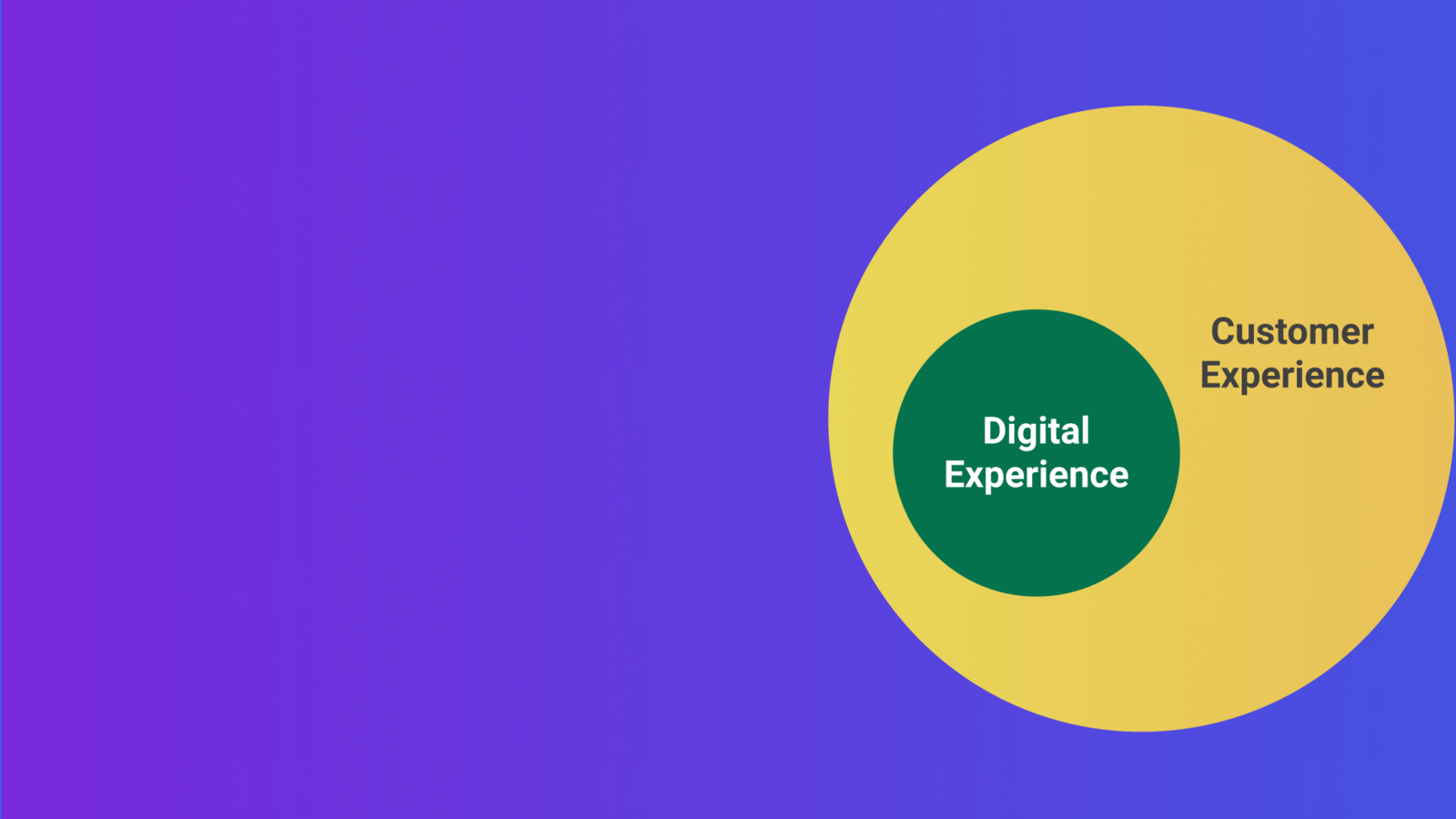- Solutions
- For Industry
- By Need
- Products
- VarbaseEnterprise CMS Distribution for Drupal
- Uber PublisherEnterprise Digital Media Platform Builder
- VardocDrupal Knowledge Base Platform
- Campaign StudioOpen Marketing Platform - by Acquia
- Open SocialSocial Business Platform - by Open Social
- Services
- Strategy
- Design
- Development
- Migration
- Support and MaintenanceSupport and Maintenance
- DevOps
- Digital Marketing

Datasheet

- Clients
- Ideas
- About
- Contact Us

Will Digital Customer Experience (DCX) Matter in 2022?

The digital customer experience (DCX) refers to all the interactions between a prospect and a brand online. It is different from customer experience (CX) in that DCX is limited to the digital world, while CX includes all forms of interaction on and off the internet.
However, in a world where the focus shifts quickly from one brand, product, or service to another, how could some brands continue to perform well throughout the years? The short answer is that they provide a worth-remembering customer experience; so they come back. And in this blog, we will be focusing extensively on the digital part of the CX, and how you can get long-term happy customers.
Does Digital Customer Experience Really Matter?
Digital Customer Experience Today
Good product quality, competitive prices, and good services are all essential components of brands’ success online. But it became clear during the past few years that brands that focus on products and prices only do not make the best conversions.
Companies who focus on the customers’ journey and on making every step of the way seamless and worth remembering, tend not only to convert more but also to make sales at higher prices. So, probably more than you think, consumers care about the digital experience your brand provides them with.
The customers’ digital experience starts with a customer’s first interaction with a brand online. And it never stops until he or she takes action and purchases an item online. In other words, advertisements, social media posts, website colors, and fonts… are all integral parts of the digital customer experience and how customers will perceive your brand. Thus interact with it.
If you manage to raise positive emotions at every step of this journey, the customer will not only come back to your website but he or she will also be more likely to recommend it. This is how powerful improving the DCX is today, and this is a part of the reason why it will still matter in the future.
Digital Customer Experience in 2022
The pandemic increased the pace at which the world is immersed in digitization. People, including your customers, became more versed in internet technologies. They developed a level of media literacy that enables them to filter digital content and decipher the amount of effort a brand devotes to satisfy its audience.
As a result, customers are opening their wallets up to companies they know will value and treat them with respect. They are disregarding other brands who may have better end products or services, but a slipshod customer experience.
This means that gone are the days when any company could cheat its way toward satisfying an audience. DCX in 2022 and beyond will require not only being omnipresent but also maintaining an unstained brand image across all the different media platforms. Let us see how to improve the DCX and how that is going to increase your inbound leads.
5 Ways to Improve Your Digital Customer Experience
The world is evolving faster than any time before. And unless you adapt, you will be forgotten for good in the blink of an eye. The only way your brand will survive the new wild digital world is by continuously monitoring the digital customer experience you bring forth to your customers with. Thus improving it.
The following are some tested techniques that will improve your DCX:
1 - Understand Your Audience

Using tools, such as Google Analytics, will provide you with insightful data about where your customers click, and how long they spend on each landing page. You will also know where they come from, and where they go next. These customers’ behavior insights can help determine what parts of the customer's journey should be improved and what other parts perform well.
Another effective way to understand your audience is to follow what the digital branding expert Gary Vaynerchuk suggests. Gary always says “the best marketing strategy is to care.” He simply suggests diving through the comment section to see what your audience says and thinks. And from their suggestions and comments, you will learn more about what they want. And give it to them after interacting with their comments reasonably.
This simple trick is extremely efficient because you’re studying your audience individually and directly, rather than through an analysis tool, or surveys where their interaction may be shaped and conditioned by the survey itself.
You can even go further and not only see what people say and expect from your brand but also spy on other competing ones. You will discover where people struggle across the market, and therefore know how to improve your own DCX. Thus creating the best customer journey possible.
Do this enough times and people will notice and start promoting you on social media, recommending you to a friend, resulting in increasing your inbound leads.
2 - Be Omnipresent
Omnipresent simply means being present everywhere all the time. So, omnibranding or omnipresent branding means producing original content across different media channels and platforms, and in different forms. In other words, being on the feed of your audience, wherever and whenever they are!
Now, this is not easy, not easy at all! Especially if we consider the continuous spouts of new content forms: TikToks and Reels, videos, stories, podcasts, articles, blogs, posts… and whatever the future may bring.
Just in the past three or four years, we witnessed how TikTok and SnapChat reconstructed and rewired how we interact with social media and the brands we love. And as Meta’s Metaverse seems to be a very promising project, we may encounter way more different and difficult forms of content becoming popular in the future.
This fast digital transformation puts pressure on how brands will maintain a world-class customer experience. But worry not, Metaverse and VR don’t belong to the very near future. You just focus on producing good content on the currently popular platforms. And also optimize other steps of the customer’s journey. Mainly, focus on communication, interacting with your audience, and good customer self-service.
3 - Mobile-First Mentality
We mentioned in a recent article that 68% of research online is conducted on mobile phones. This means that you should optimize not only your content but your whole brand’s digital presence to smoothly fit on small screens. This includes forms of media content (blogs, videos, images… etc) and also the codebase of your website or websites.
Using a content management system that loads fast on mobile phones without any issues is very critical. Your audience will not come back to your website, and will not navigate it if it is too slow and complicated. Make sure to use the right CMS and use the right theme builder to avoid any unpredictable problems.
CMS Buyers Guide
Need help choosing the ideal CMS?
Download our free CMS Buyers Guide!
4 - Respect Your Audience’s Privacy
Make it clear throughout your websites that you respect your customers' privacy. People today care about their privacy probably more than whatever product or service they may provide. Don’t collect unnecessary data, and give people the right to choose what cookies to give up when navigating your website.
When people see that they are given the freedom of choice, they are more likely to be more tolerant and come back. But when you impose cookies on them, they’d certainly bounce back and affect your bounce rate. Let alone the fact that they may never come back nor recommend you.
5 - Keep Improving and Never Hesitate to Ask for Help
Once you apply all the aforementioned techniques, your brand is expected to start getting high-quality inbound leads who are educated about the brand’s identity and know its voice well. But this is not the end! The world will keep on evolving whether you adapt and improve or you stand still.
Keep on continuously testing new techniques and adopting the ones that bring the best results. More importantly, listen to what experts in the DCX industry say, and never hesitate to consult them and get help if needed.
Digital Transformation and Customer Experience

Traditional entrepreneurs and business owners are increasingly realizing that we live in an extremely different new world. It is becoming clearer to them that time is the new currency, and the experience they provide their customers with is the new product. In other words, companies today are competing over who provides the best digital customer experience to their customers rather than the best physical product or service alone.
Customers as well, are now gauging the quality of their experiences based on how long it takes them to complete an order and get their product shipped or service completed.
This shift in prioritization from product and service quality to digital experience quality is known as Digital Transformation. Companies who don’t move to a customer-centric business model, or simply fail to digitally transform their structure, will certainly experience a hard time recovering and coming to the game. Avoid that by checking our former article Why Digital Transformation Fails, which not only talks about the reasons why companies fail but also how they can avoid that.
- Digital Experience
- Digital transformation



